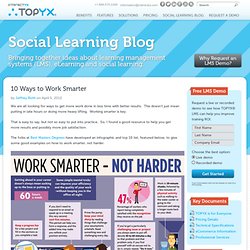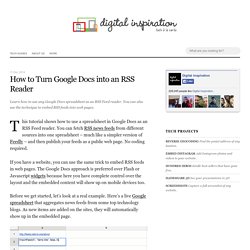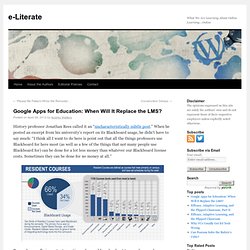

10 Ways to Work Smarter. We are all looking for ways to get more work done in less time with better results.

This doesn’t just mean putting in late hours or doing more heavy lifting. Working smarter is key. That is easy to say, but not so easy to put into practice. So, I found a good resource to help you get more results and possibly more job satisfaction. The folks at Best Masters Degrees have developed an infographic and top 10 list, featured below, to give some good examples on how to work smarter, not harder. Getting ahead in your career doesn’t always mean sucking up to the boss or putting in 60 hours a week.
Here are the 10 best tips that we came up with: Tip 1: Keep a progress bar for a key project and fill in the sections as you complete a task. Tip 2: If you don’t need to respond to an email or speak up in a meeting this very second, wait five minutes. Tip 3: Prime the pump. Tip 6: Got a job with a million little tasks? Tip 7: Sometimes you just need to punt and try it again tomorrow. 2. 3. 4. 50 Little-Known Ways Google Docs Can Help In Education. 5 Ways To Be A Better Public Speaker 7.16K Views 0 Likes If you've been asked to speak at a conference or host a seminar, you may be shaking in your boots.
Not only is the thought of speaking in public nerve-wracking, but being in charge of a seminar that no one wants to at... My 10 Favorite Learnist Boards Of The Year 2.66K Views 0 Likes I wanted to take a moment and share my favorite Learnist boards from the past year. ImportFeed in Google Docs Tutorial - Use Google Docs as an RSS Reader. Learn how to use any Google Docs spreadsheet as an RSS Feed reader.

You can also use the technique to embed RSS feeds into web pages. This tutorial shows how to use a spreadsheet in Google Docs as an RSS Feed reader. You can fetch RSS news feeds from different sources into one spreadsheet – much like a simpler version of Feedly – and then publish your feeds as a public web page. No coding required.
If you have a website, you can use the same trick to embed RSS feeds in web pages. Before we get started, let’s look at a real example. Here are the complete step involved for putting RSS feeds into Google Docs. Open a new Google spreadsheet and type the RSS feed URL in cell A1. Google Docs for Feeds. - e-Literate. History professor Jonathan Rees called it an “uncharacteristically subtle post.”

When he posted an excerpt from his university’s report on its Blackboard usage, he didn’t have to say much: “I think all I want to do here is point out that all the things professors use Blackboard for here most (as well as a few of the things that not many people use Blackboard for) can be done for a lot less money than whatever our Blackboard license costs. Sometimes they can be done for no money at all.” Rees asks a really important question: why would a school opt to spend so much money on an LMS when many of its features go unused? Why pay when you can find cheap or free alternatives elsewhere? I’m not sure how much the usage patterns of Rees’ university match those at other institutions. I say this, of course, in light of the news this week that the long-awaited Google Drive is finally here.
Old Google product. Unlike some features that take weeks (months?) And what then? Google+ Comments.